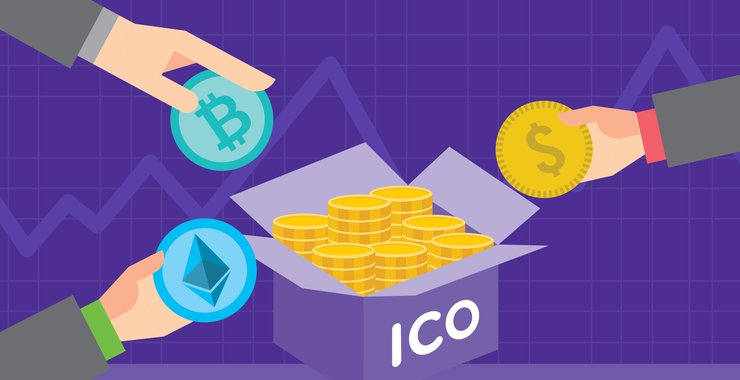How to Add Cryptocurrency to Your Piggy Bank


- How to get cryptocurrency coins
- Mining and its risks
- Crypto salaries
- Cryptocurrency trading
- Most popular exchanges and wallets
- Investing in ICOs and its risks
- Wrap Up
Cryptocurrencies have become increasingly popular, and almost everyone has at least heard about them at this point. Over the past few years, several stories came out about this ground-breaking technology.
Some said that cryptos are an excellent method for taking power away from the banks and giving it back to the people. Meanwhile, others labeled them as dangerous to handle due to volatility, scams, and controversies.
Since crypto enthusiasts speak so passionately and confidently about these digital currencies, the chances are that they may have convinced you to give them a shot. Well, you are not the only one.
The number of people who are joining the cryptocurrency hype has been overgrowing for years, now. In fact, it is impossible to estimate how many people have jumped on board the crypto bandwagon so far. But the numbers indicate they could be millions, with more expected to join in the future.
Therefore, if you are interested in becoming an investor, trader, or coin holder, you must learn how to add cryptocurrency to your piggy bank. So stick around to find out how to enter the crypto industry.
Content Overview
Mining
The process of mining is simple in concept, but pulling it off is a whole different matter. It is a process of solving blocks and validating transactions, for which you receive rewards in cryptocurrency.
You see, when someone pays using cryptos, the operation needs to be verified and confirmed. Then, it joins a group of transactions, which are called blocks.
Solving a block means connecting your computer to the crypto network and cracking complex mathematical equations. Once these math problems are resolved, so is the block, and it becomes a part of a chain called ‘the blockchain.‘
The latter is a decentralized, distributed ledger that records every transaction that was completed using specific crypto.
When you solve blocks, you receive cryptocurrency as a reward. These coins come from the transaction fees of the payment senders. Those who do this are called crypto miners, while the process itself is called crypto mining.
Miners get coins depending on which blockchain they help maintain. In other words, they cannot get Bitcoin (BTC) if they are mining Ethereum (ETH), and vice versa.
However, keep in mind that mining is no easy process. At first, people could do it with their own computers. That is how Satoshi Nakamoto — the founder of Bitcoin — and other original miners probably did it. When the cryptocurrency prices went sky-high, mining became very popular, as it allowed people to score coins with increasing value quickly.
Mining Profitability
Soon enough, the mining sector had more participants than it needed, and it was difficult for people to get to blocks, due to all the competition. In the end, the solution was to organize mining farms, where miners would combine their computers and work on the same block, then split the reward.
And even if you managed to get to the block somehow, it is very complicated for a single computer to solve it. This was part of Satoshi Nakamoto’s design so that resolving blocks would take time. Each Bitcoin block needs to last for around ten minutes, and if there are a lot of miners, the difficulty increases.
As a result, no one can mine Bitcoin blocks on their own, which is why it’s preferable to go after some other coin. But bear in mind that this process takes an enormous toll on the computer, as it requires much equipment and consumes a lot of power.
At first, people were able to handle it with their computer processors — CPUs. Then, they shifted towards more powerful graphic cards — GPUs. They became obsolete when the difficulty went up, as well, and special mining gear was invented to handle the blockchains’ requirements.
Unfortunately, this gear costs thousands of dollars, which can be very expensive. And you must always monitor the price of the currency you’re mining because if it drops, you’ll suffer significant losses.
Get Paid in Crypto
But why go through all this trouble when you can get the end product in a much easier way? Getting paid in cryptocurrency. Even though that is unlikely if you work in a traditional job, some countries like Japan do offer that option.
Another option would be to find freelance work, where the employees offer cryptocurrencies in exchange for your skills. It is not the best solution, but it is possible. You can find this type of work on sites like XBT Freelancer or Cryptogrind.
“Cryptogrind offers Bitcoin multi-signature escrow, and never stores your Bitcoins in any database or locally owned wallet. Using cutting edge encryption technology, we access the blockchain directly with no need for hot wallets.”
Cryptogrind
Furthermore, you can receive cryptocurrencies as rewards for playing video games or watching ads and videos. Some blockchain-based social networks like Steemit even offer cryptos if you like their post. However, you’ll most likely get fractions of fractions of the coin, worth a few cents, at best.
Crypto Trading
Considering a career change? Or maybe you’d like a second job to earn some money on the side? Well, trading in cryptocurrency can prove to be a brilliant source of income, if you know what you’re doing, that is.
Well, trading itself is easy. You go to the exchange and deposit your traditional (fiat) money or coins (if you are using a centralized exchange) in return for cryptos. If you want to buy coins with fiat currencies, there are only a few options available, like Tether (USDT), Bitcoin (BTC), and Ethereum (ETH).
Once you make the purchase, you can either use your coins to buy other cryptocurrencies or keep them in your wallet until their value increases. If you go for the latter option, you can then put them up for sale or trade.
But please note that you can only trade them for the coins that the exchange allows. These are called trading pairs, and they look like this: BTC/ETH, BTC/USD, and such. If the service doesn’t have the pair you’re looking for; you’ll have to exchange your coins for USD then use your cash to buy the coins that you want.
And if you want to cash out, put your coins up for sale and wait till someone purchases them. The process doesn’t usually take long.
Popular Exchange Platforms and Wallets
After the crypto craze, several exchanges surfaced, which made choosing the best service quite challenging. Today, there are plenty of popular platforms, including:
- Binance
- Coinbase
- eToro
- OKEx
- Coinmama
- Bitpanda
- Cex.io
- Kraken
- LocalBitcoins
- Bitstamp
- Gemini
- Changelly
- Bittrex
- Bitfinex
As for some of the most popular crypto wallets in which you can hold your coins, these are your options:
- Ledger Nano S
- Coinbase
- Ledger BLUE
- KeepKey
- Trezor
- StrongCoin
- Exodus
- Jaxx – Ice Cube
- Mycelium
- Electrum
- Bread
- Ethos
- Coinomi
There are many other exchanges and wallets that you can pick. But see which coins they support first before you create one.
Trading Pointers
Now, all the above was the easy part. The hard part is knowing how to make a correct trading decision. As I hope you realized by now, crypto prices are not fixed or stable. They go up and down all the time. Sometimes, some events can impact them, meaning that you must always keep an eye on fresh news.
Furthermore, holders who have a large number of coins, a.k.a. crypto whales can influence prices. If they start dumping (selling) coins, other investors will follow suit, which causes the price to drop. On the other hand, if they buy, the value of the coins will rise because traders will also purchase the crypto.
That is why many people believe that cryptocurrency whales manipulate the market.
There are all kinds of trading strategies that people tend to follow, like trading with leverage, where traders bet on the coin’s future price. If they are right, they get substantial gains. But if they are not, they lose their investment.
This is an advanced form of trading, and I don’t recommend it for beginners or those who lack trading experience. The rewards are undoubtedly great, but the risks are many times higher than regular trading.
Moreover, some investors purchase a particular coin and hold on to it for months or even years as they believe that its price will grow in the future. This is called HODLing (HODL = Hold On for Dear Life), and it is one of the best strategies.
However, not all purchases turn out to be on point, and the cryptocurrency you invested in might go bust.
Whatever the case, you must have a deep understanding of individual coins, trading strategies, and market sentiment. You must also know how to recognize opportunities early and react immediately.
Crypto Investing
Investing in cryptocurrency is an excellent method to purchase new coins that are still relatively unknown. That includes participating in token sales, which could reap huge rewards for investors if the crypto they bought becomes a success.
Token sales, or token offerings, are events where developers create coins, and then sell them to the public. These currencies are part of a project that focuses on solving existing problems.
For example, in the real estate industry, it is difficult for investors to find good deals on a global scale. They miss out on excellent opportunities and find themselves unable to buy properties. But a platform that offers real estate agencies and individuals the chance to list their assets can fix that.
As a result, people can post their properties in the same place, and investors can complete their purchases using the project’s coin. And to raise funds for the program, developers resort to ICOs, or Initial Coin Offerings.
Often, these projects are still in the early stages of their product’s development. They need money gathered from the ICO to complete their platform. In other words, investors would buy their coins, hoping that they would be useful and valuable someday in the future. And one of those investors could be you.


Risks Involved
The most significant danger of new coins and ICOs is scams. Con artists can come up with a fake project and currency, and offer it to the public for money. They would then collect the sums, and you’ll never hear from them again.
Another thing that you must be wary of is weak projects. Sometimes, developers create a lousy coin, without a proper vision, roadmap, or any knowledge of what they will do next. They only want to get the money, and they think they will figure things out later on.
This is why investing is a risk, and why you need to check out every project thoroughly. Also, you must ensure that the team knows what it is doing and if its members have other successful projects in their portfolio.
And one of the most important things is to invest in a project that has a bright future. Therefore, you must ask yourself if the idea will make a difference or solve problems. Remember that these factors will determine the value of the coin you invested in.
As you can imagine, investing requires a lot of knowledge, research, and patience, not to mention the risks. Because of that, it is not for everyone, and you must decide if you are comfortable with waiting for years to see your investment pay off.
How to Become a Crypto Holder – Final Thoughts
These are some of the primary and most popular ways to get your hands on cryptocurrencies. There are, of course, plenty of other ways to engage in crypto trading and investing. But this guide will provide you with must-know facts about acquiring these digital coins.
Just remember that cryptocurrency prices are volatile and unstable, which means that any investment can go wrong. Therefore, play it smart and don’t take too many risks. Also, learn to cut your losses in case things go haywire.
Are you a crypto holder or investor? Did this article persuade you like to become one? Tell us what you think in the comment section below.




One Comment